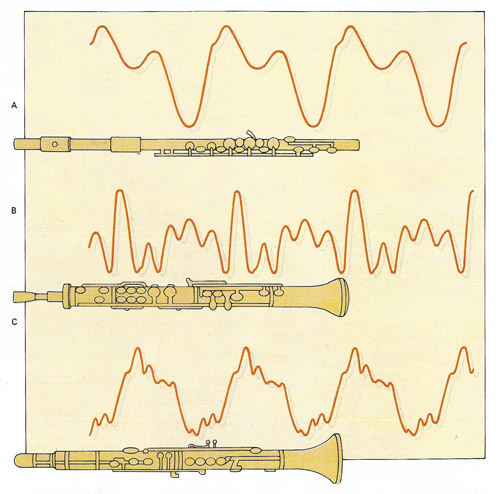Loosely inspired by how much people seemed to enjoy a similar question I asked on Games about unappreciated titles. But answers don’t have to be media related (they still can be though).
Loosely inspired by how much people seemed to enjoy a similar question I asked on Games about unappreciated titles. But answers don’t have to be media related (they still can be though).
Sound engineering. Most people think sound is somehow sine waves and that’s it. And well, that’s technically correct on some level, but you can layer sound waves on top of each other to create triangle waves or square waves or what specific instruments happen to sound like: Source
Source
And well, these aspects have implications. Like with an oboe, even the basic waveform is quite interesting, so it’s excellent for solos.
On the other hand, with a more boring sound, like a sine wave, you can do relatively wild things in terms of melody or combining them into intervals, and listeners won’t feel overwhelmed as quickly.
And then you’ve got the fun field of drums. You can often just take white noise (or pink noise etc.) and just make its volume drop off rapidly and that already sounds similar to a drum.
Which is again interesting on the boring/interesting spectrum. That noise signal adds a short moment of chaos into the mix. But then we often make drums play quite structured rhythms to entertain a different boring/interesting spectrum over time.
I love sound engineering and design as a whole. Music production was what got me into it. It’s still mind boggling to me how much you can do with a simple sine wave and process it into essentially unlimited amounts of various sounds.
I never knew a thing about music theory, synthesizers, drum machines, etc. Almost 7 years down this path and I’m still learning as I go and just as curious as when I first started.
Seeing different instruments through an oscilloscope or watching the different frequencies dance as a whole on an EQ plugin is my favorite.
The thing for me is, I did already know large chunks of music theory before getting into sound design, but traditional music theory doesn’t concern itself with waveforms.
So, I know that a fourth interval sounds spiritual or that a triad in the base key sounds like ‘home’, i.e. you probably don’t want to return there fully, unless you’re concluding the journey / music piece.
But like, these are two completely random, basic examples and I don’t know what the waveforms look like for them. Whether there’s anything in the waveforms that correlates with that perception.
So, it feels like I learned most of the chemistry without any of the physics. And that I do now need to learn the physics to discover more of the chemistry. That there’s potentially even quite large chunks of uncharted territory for music theory, because everyone’s so obsessed with chemistry. Will have to see, if I’ll discover as grand things as I’m hoping for.
This is interesting! How can I get into this? Do I have to invest in some equipment or can I just use software to create sounds?
No idea, if there is any guided path into this. Much like the other commenter stumbled into it via music production, I stumbled into it via composing.
Personally, I’ve mostly dicked around with SurgeXT and MilkyTracker.
SurgeXT is a so-called VST plugin for use in digital audio workstations (DAWs), which is what the big boys & gals use to make electronic music. But it can also be started standalone, as just a digital instrument. And then you can type on your computer keyboard to play your sound like on a piano. SurgeXT is powerful, it will overwhelm you. Still does for me.
MilkyTracker presents an old-school way of making complete songs, generally 8- or 16-bit songs.
It’s quite reduced in its features, which makes it a lot less daunting, and does allow playing around with waveforms for instruments rather directly.
Honestly, I don’t think, you can really make a wrong start into this field. Lots of modulation methods have been around since the 70s and 80s, which you’ll find in basically any music software.
Try to find something that’s fun to you, to do with those sounds, so you keep coming back to try out new things.
For example, I’m a musician, so somedays I do just jam out to myself.
But working towards a little 8-bit song and just trying to create pseudo-instruments is also cool.
If you do have fun with it, you can splurge on hardware, like good headphones and a MIDI keyboard, but you don’t need those to get into it.
Thank you!